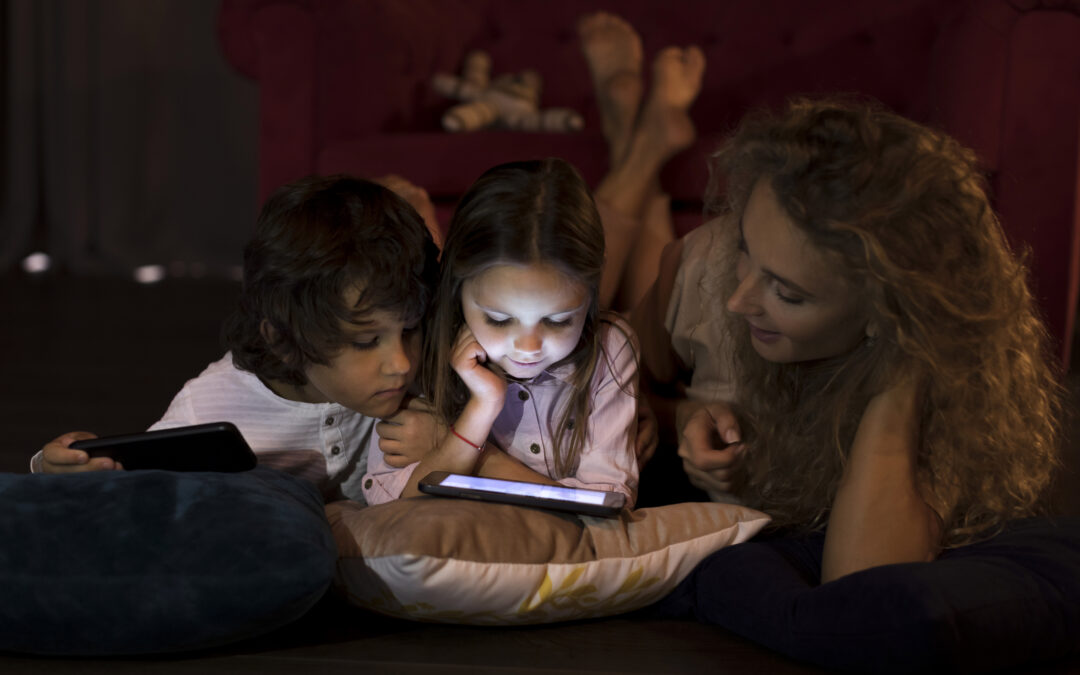As October arrives and daylight hours steadily decrease, families across Marbella and Madrid face a predictable challenge: managing children’s screen time becomes significantly more difficult. The extended outdoor play that naturally limited screen exposure during summer months gives way to earlier darkness, cooler temperatures, and increased indoor time. Understanding how to navigate this seasonal shift while maintaining healthy technology boundaries requires thoughtful strategies that work with autumn’s realities rather than against them.
Understanding the Seasonal Screen Time Challenge
During summer months, natural consequences often regulate children’s screen use. Long daylight hours create opportunities for beach visits, playground time, and outdoor exploration that compete effectively with digital entertainment. Children naturally choose active outdoor play when weather permits and daylight extends well into evening hours.
Autumn fundamentally changes this equation. Sunset arrives earlier each week, temperatures cool enough to make extended outdoor play less appealing, and weather becomes less predictable. These environmental changes occur simultaneously with increased academic pressures as school routines intensify after the initial settling-in period.
Children aren’t being deliberately difficult when they request more screen time during autumn months—they’re responding rationally to genuine changes in their available options and energy levels. Acknowledging this reality helps families approach screen time management with understanding rather than frustration.
Moving Beyond Daily Time Limits
Many families approach screen time management through daily limits—”two hours maximum” or similar numerical restrictions. While this approach provides clear boundaries, it often creates unnecessary conflicts and fails to address the underlying challenge of providing engaging alternatives during increased indoor time.
More effective strategies focus on when and how screens are used rather than simply how much. Creating designated screen time windows—”screens are available between 4-5pm after homework” or “weekend mornings before 11am”—provides clarity while reducing constant negotiation about whether children have exceeded their limits.
This approach also helps children develop better time management and delayed gratification skills. Rather than constantly calculating remaining screen minutes, they understand that screen access occurs during specific periods and must plan accordingly.
Professional nannies excel at implementing these structured approaches consistently, maintaining boundaries even when children test limits or parents aren’t present to enforce family rules.
Preparing Engaging Alternatives
The most common screen time battles occur when children claim boredom but haven’t been provided with appealing alternatives. Simply removing screens without offering engaging substitutes creates frustration and resistance rather than developing healthier habits.
Successful autumn screen time management requires proactive preparation of activities that genuinely compete with digital entertainment. This doesn’t mean elaborate crafts or expensive toys—it means having options readily available that match children’s current interests and energy levels.
Age-Appropriate Activity Libraries
Professional caregivers develop mental catalogues of activities appropriate for different ages, moods, and energy levels. For younger children, this might include sensory bins, building materials, or imaginative play props that can be deployed quickly when boredom strikes.
School-age children benefit from more complex options—craft projects with multiple steps, science experiments, cooking activities, or building challenges that require sustained engagement. The key involves matching activity complexity to children’s current capabilities and attention spans.
Teenagers often resist obvious activity suggestions but respond well to opportunities that feel more sophisticated—learning new skills through online tutorials (used productively rather than passively), creative projects aligned with their interests, or activities that provide genuine autonomy and choice.
Strategic Activity Rotation
Even the most engaging activities lose appeal through overexposure. Professional nannies understand the value of rotating available options, temporarily removing activities that have lost their novelty and reintroducing them after sufficient time has passed.
This rotation strategy creates a sense of freshness and discovery that helps activities compete effectively with the constant novelty that screens provide. Children who would reject a puzzle that’s been available for weeks might engage enthusiastically with the same puzzle after it’s been stored away for a month.
Making Screen Time Social Rather Than Isolating
Not all screen time creates equal impact on children’s development and family relationships. Solitary screen use that replaces human interaction poses different challenges than screen time that facilitates family connection or genuine learning.
Transforming some screen time into shared family experiences changes its nature fundamentally. Family movie nights, collaborative video game sessions, or watching educational content together creates connection rather than isolation. These shared experiences also provide natural opportunities for discussing media literacy, critical thinking about content, and shared enjoyment.
Professional nannies can facilitate this approach by selecting age-appropriate content that aligns with family values, creating discussion opportunities around what children are watching, and ensuring that even permitted screen time includes thoughtful engagement rather than passive consumption.
Protecting Sleep Through Evening Routines
Autumn’s earlier darkness often leads families to begin evening routines earlier, which should theoretically support better sleep. However, increased screen exposure during these extended indoor hours can undermine sleep quality even when children go to bed at appropriate times.
The blue light emitted by screens disrupts natural melatonin production, making it harder for children to fall asleep even when they’re physically tired. This effect becomes particularly problematic during autumn and winter when children’s bodies are already adjusting to changing daylight patterns.
Creating tech-free wind-down periods before bed helps children’s bodies prepare naturally for sleep. This might involve reading, quiet conversation, gentle music, or calming activities that signal the approaching transition to sleep without the stimulating effects of screens.
Professional caregivers excel at implementing these evening routines consistently, creating predictable patterns that help children settle more easily regardless of seasonal changes or daily variations.
Teaching Healthy Technology Relationships
The ultimate goal of screen time management involves helping children develop their own healthy relationships with technology rather than simply controlling their access during childhood. This requires conversations about why limits exist, guidance in making good choices, and gradual increases in autonomy as children demonstrate responsible decision-making.
Explaining the reasoning behind screen time limits—sleep disruption, reduced physical activity, decreased face-to-face social interaction—helps children understand that restrictions exist for their benefit rather than arbitrary parental control. Age-appropriate discussions about technology’s benefits and drawbacks build critical thinking skills that serve children throughout their lives.
Professional nannies support this educational approach by having these conversations naturally during daily interactions, modeling healthy technology use themselves, and helping children notice how they feel after different types of screen engagement.
Adapting Strategies to Individual Children
No single screen time approach works equally well for all children. Some respond well to structured schedules while others need more flexibility. Some children self-regulate effectively with minimal oversight while others require consistent external boundaries.
Experienced caregivers observe individual children’s patterns and adjust strategies accordingly. They notice which children become overstimulated by screens and need longer transition periods afterward, which children use screens primarily for social connection versus passive entertainment, and which children need more active support in finding engaging alternatives.
This individualized approach requires flexibility and ongoing assessment rather than rigid application of universal rules. Professional nannies provide valuable insights about children’s responses to different approaches, helping families refine their strategies based on actual results rather than theoretical ideals.
Conclusion
Managing screen time effectively during autumn and winter months requires understanding that seasonal changes legitimately affect children’s activity options and energy patterns. Rather than fighting against these natural rhythms, successful strategies work with them by providing clear structure, engaging alternatives, and thoughtful guidance that helps children develop healthy technology relationships.
At The Governess & Co, our nannies bring expertise in implementing screen time strategies that maintain family values while respecting seasonal realities. They provide consistent boundaries, creative alternatives, and the kind of engaged supervision that helps children thrive during months when outdoor options naturally decrease.
The goal isn’t creating screen-free childhoods but rather raising children who can make thoughtful choices about technology use, engage fully in non-digital activities, and understand that screens represent one option among many for entertainment, learning, and connection. With thoughtful planning and consistent implementation, families can navigate autumn’s challenges while maintaining the healthy boundaries that support children’s overall development and wellbeing.

